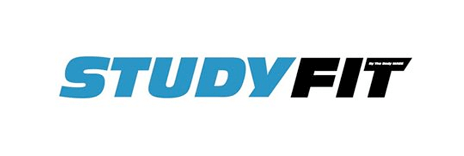Our personal trainers in Poole bring you tempo training for fat loss: Vary the tempo of your lifts to lose fat and get more powerful. Manipulating tempo is an easy way to modify the amount of time your muscles spend under a load, making it one of the best tools to help you break through plateaus and drop a few pounds of fat.
A fascinating new study in the Journal of Strength and Conditioning Research shows how varying tempo and load will produce very diverse physiological results. This study compared the effect of performing the upright seated bench press on power, work output, exercise time, energy burned, and excess post-exercise oxygen consumption (EPOC) using the following four protocols performed to failure:
• Muscular endurance, 55 percent 1RM with a 4141 tempo
• Fast Force endurance, 55 percent 1RM with an explosive tempo
• Maximum Strength, 85 percent 1RM with an explosive tempo
• Hypertrophy, 70 percent 1RM with a 2121 tempo
(Here is a quick description of tempos :
The first and third are the amount of time it takes you to perform the eccentric and concentric portions of the exercise, respectively. The second and fourth are the number of seconds you are advised to pause after. So 2010 requires a 2 second eccentric portion (lowering the weight), no pause at the bottom, a one second concentric portion and no pause at the top.
the ‘X’ implies you perform the action as fast as possible with good form. You typically see this on the concentric (raising the weight) portion of an exercise. )
Results showed that the Fast Force protocol resulted in the greatest power output, followed by the Maximum Strength protocol—a finding that is not surprising since those exercise trials were performed explosively and the others used a controlled, deliberate tempo. Maximum possible velocity and loads in the 30 to 60 percent of the 1RM range will always produce greater output than restricted lifting speed or heavy loads. Still, the fact that the Maximum Strength trial produced the second greatest power output also supports the inclusion of heavy load training for power—it’s not that one tempo is always best, but that you must vary tempo to achieve optimal results.
The Fast Force protocol also resulted in much greater work to be performed than all other protocols. The Maximum Strength protocol was second in work output, but this protocol took the shortest amount of time to complete (only 30 seconds) compared to the Muscular Endurance, which was longest in 105 seconds. The Fast Force and Hypertrophy trials both took about 64 seconds.
Considering that energy is related to the ability to perform work, it can be concluded that the Fast Force protocol requires the highest energy cost, or for practical purposes, it results in the greatest calorie burn. However, the Maximum Strength protocol provides the greatest energy burn for the amount of time spent lifting, again highlighting the value of tempo variation.
One interesting point made by the researchers is that in the Hypertrophy protocol, the amount of work performed was similar to that of the Maximum Strength trial, but the Hypertrophy protocol took much longer to complete, indicating that building muscle is a result of longer exercise duration and the subsequent physiological and metabolic responses produced, rather than mechanical work.
The last thing you should be aware of is that all the tempo protocols produced similar EPOC, which refers to the amount of calories burned following the workout due to an elevated metabolism. Although EPOC was similar, you would achieve best fat loss and body composition by using similar time under tension as with the Fast Force and Maximum Strength protocols since these used the most energy during training, and EPOC can be maximized with higher loads or greater work.
To book in with one of our personal trainers in Poole, call 01202980193 today.
Reference
Buitago, S., Wirtz, N., et al. Mechanical Load and Physiological Responses of Four Different Resistance Training Methods in Bench Press Exercise. Journal of Strength and Conditioning Research. 2012. Published Ahead of Print.







